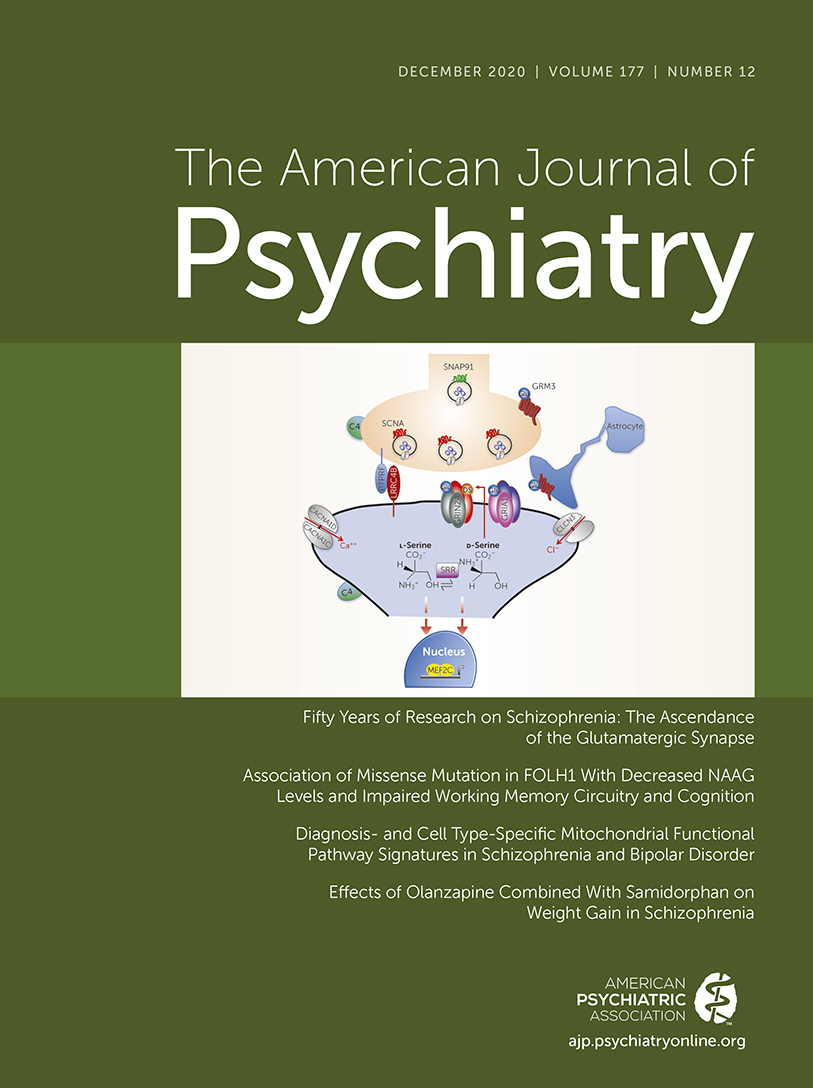Are All Psychotic-Like Experiences Really “Psychotic”?: Response to McLawhorn and Jackson
To the Editor: We thank Drs. McLawhorn and Jackson for their interest in our study (1). Their letter brings up the relevant question as to a seeming contradiction of referring to psychotic experiences as being part of “normal development” yet simultaneously indicating an underlying “transdiagnostic vulnerability.” Although this reasoning might seem contradictory, it also reflects the current knowledge in the field.
Multiple attempts have been made to distinguish between “clinical” and “nonclinical” psychotic experiences, such as those highlighted in the case of hallucinations in a systematic review: although persistent and distressing psychotic experiences are more often associated with (transdiagnostic) clinical courses, no definitive characteristics have been identified that can reliably differentiate between clinical and nonclinical populations (2). Thus, evidence suggests that psychotic experiences might be part of “normal” development for many individuals and should clinically always be viewed within a broader context. Based on current knowledge, we agree that psychotic experiences constitute phenomenologically heterogeneous markers of a transdiagnostic vulnerability and that the persistence and distress of psychotic experiences are perhaps better predictors of a more specific psychosis vulnerability than any specific type or form of psychotic experience. Our point is that psychotic experiences share the characteristics of most common mental symptoms, like core symptoms of anxiety or depression: these are not all-or-none phenomena but are better conceptualized along a continuous dimension that exists in a multidimensional space of other continuously distributed symptoms and impairments. The imposition of categories like “normal” relative to “abnormal” psychotic experiences onto this multidimensional space inevitably introduces a loss of clinical information.
In the literature of psychosis at the less severe end of the spectrum, the terms psychotic experiences and psychotic-like experiences are often used interchangeably (3). We do not believe that an attempt to distinguish between psychotic experiences and psychotic-like experiences will be fruitful. Rather, we pose that usage of the term psychotic-like experiences is misleading, because it suggests profound qualitative differences in psychosis at different “levels” of the spectrum, and potentially retains stigma surrounding psychosis, because it implies that psychotic experiences at lower levels of the psychosis continuum are not “real” (e.g., most psychiatrists would never state that a patient has “anxiety-like symptoms”).
Finally, in our study, we used a translated version of the 2009 Schedule for Affective Disorders and Schizophrenia for School-Age Children–Present and Lifetime Version (K-SADS-PL) as an interview framework to assess psychotic experiences (4). Although we reported results with high interrater reliability (1), the K-SADS-PL, like most other assessments of psychotic experiences, was not designed for this task specifically, but it does tap into positive psychotic symptomatology.
1 : Mental health service use and psychopharmacological treatment following psychotic experiences in preadolescence. Am J Psychiatry 2020; 177:318–326Link, Google Scholar
2 : Hallucinations: a systematic review of points of similarity and difference across diagnostic classes. Schizophr Bull 2017; 43:32–43Crossref, Medline, Google Scholar
3 : Terminology and assessment tools of psychosis: a systematic narrative review. Psychiatry Clin Neurosci 2020; 74:226–246Crossref, Medline, Google Scholar
4 : K-SADS-PL 2009 working draft. Pittsburgh, Western Psychiatric Institute and Clinic: Advanced Center for Interventions and Services Research for Early-Onset Mood and Anxiety Disorders, 2009Google Scholar



